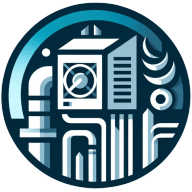Welcome to our comprehensive guide on HVAC troubleshooting and diagnostics. This blog post aims to provide you with a deep understanding of common HVAC problems, their causes, and how to diagnose and fix them. We'll delve into the intricacies of HVAC systems, providing you with the knowledge you need to tackle any HVAC issue that comes your way.
Understanding HVAC Systems
HVAC systems, short for Heating, Ventilation, and Air Conditioning, are complex systems that regulate the temperature and air quality in our homes and offices. They consist of various components, each with a specific function, and all working together to ensure a comfortable indoor environment.
Understanding how these components interact is the first step in troubleshooting and diagnosing HVAC problems. The heating component, for instance, includes a furnace or boiler that heats air or water, respectively. The ventilation part ensures the proper circulation of air, removing stale air and introducing fresh air into the building. The air conditioning unit cools the air, providing relief during hot weather.
Each of these components has its potential issues, which can affect the overall performance of the HVAC system. For example, a malfunctioning furnace may result in inadequate heating, while a faulty air conditioning unit can lead to insufficient cooling. Similarly, issues with the ventilation system can lead to poor air quality.
Common HVAC Problems and Their Causes
Several common problems can affect HVAC systems. These include inadequate heating or cooling, poor air quality, unusual noises, and increased energy consumption. Each of these problems can have multiple causes, making HVAC troubleshooting a complex task.
Inadequate heating or cooling, for instance, can result from a malfunctioning thermostat, a blocked air filter, or low refrigerant levels in the air conditioning unit. Poor air quality can be due to issues with the ventilation system, such as blocked vents or a malfunctioning air purifier. Unusual noises can indicate mechanical problems, such as a faulty fan or a loose component. Increased energy consumption, on the other hand, can be a sign of an inefficient system, possibly due to outdated components or poor maintenance.
Diagnosing HVAC Problems
Diagnosing HVAC problems involves identifying the symptoms, understanding their possible causes, and conducting tests to confirm the diagnosis. This process requires a good understanding of HVAC systems and their components, as well as the ability to use diagnostic tools.
For example, if an HVAC system is not providing adequate heating, the first step in diagnosing the problem would be to check the thermostat settings. If the thermostat is set correctly, the next step would be to check the furnace or boiler. This could involve checking the fuel supply, inspecting the burner, or testing the heat exchanger.
Similarly, if the HVAC system is making unusual noises, the diagnosis process would involve identifying the source of the noise. This could be a fan, a motor, or any other moving part. Once the source of the noise is identified, further tests can be conducted to determine the exact cause of the problem.
Troubleshooting HVAC Problems
Once a problem has been diagnosed, the next step is troubleshooting, which involves fixing the problem. This could involve repairing or replacing faulty components, adjusting settings, or conducting maintenance tasks.
For instance, if the diagnosis reveals that a blocked air filter is causing inadequate cooling, the troubleshooting step would involve replacing the air filter. If a faulty fan is causing unusual noises, the fan may need to be repaired or replaced.
It's important to note that some troubleshooting tasks require professional expertise. For example, repairing a furnace or an air conditioning unit often involves dealing with electrical components and refrigerants, which can be hazardous if not handled correctly. Therefore, it's always advisable to seek professional help when dealing with complex HVAC problems.
Preventive Maintenance and Regular Checks
Preventive maintenance and regular checks can help avoid many HVAC problems. These include tasks such as cleaning air filters, inspecting ducts, and checking refrigerant levels.
Regular checks can help identify potential problems before they become serious. For example, checking the air filter regularly can help detect blockages before they affect the performance of the HVAC system. Similarly, inspecting the ducts can help identify leaks or blockages that can affect air quality.
Preventive maintenance, on the other hand, involves tasks that help keep the HVAC system in good working condition. These include tasks such as lubricating moving parts, checking and adjusting thermostat settings, and inspecting and cleaning the furnace and air conditioning unit.
When to Seek Professional Help
While some HVAC problems can be diagnosed and fixed by homeowners, others require professional expertise. It's important to know when to seek professional help to avoid causing further damage to the HVAC system or risking personal safety.
For instance, problems involving electrical components or refrigerants should always be handled by professionals. Similarly, if the HVAC system is not functioning despite troubleshooting efforts, it's advisable to seek professional help. Professionals have the necessary training and tools to handle complex HVAC problems and can ensure that the system is repaired safely and effectively.
Wrapping Up: HVAC Diagnostics and Troubleshooting
Understanding HVAC troubleshooting and diagnostics is crucial for maintaining a comfortable and healthy indoor environment. While some problems can be diagnosed and fixed by homeowners, others require professional expertise. Regular checks and preventive maintenance can help avoid many problems, but when issues do arise, knowing how to diagnose and troubleshoot them can save time and money. Remember, when in doubt, don't hesitate to seek professional help.

